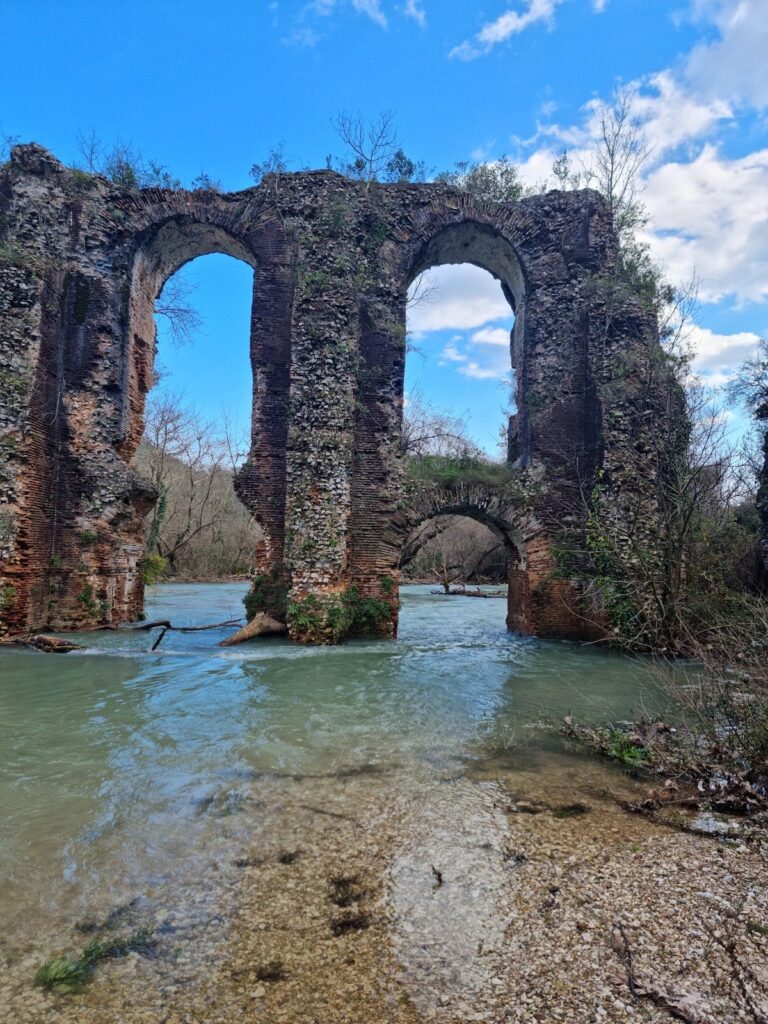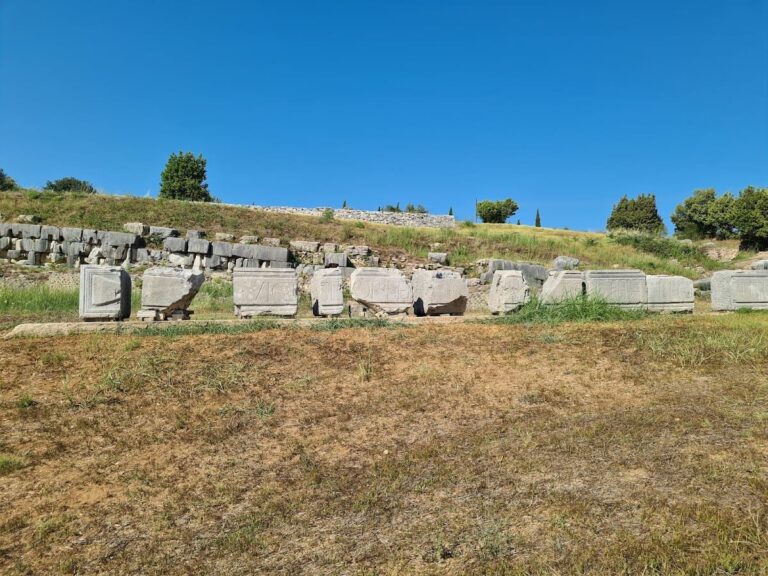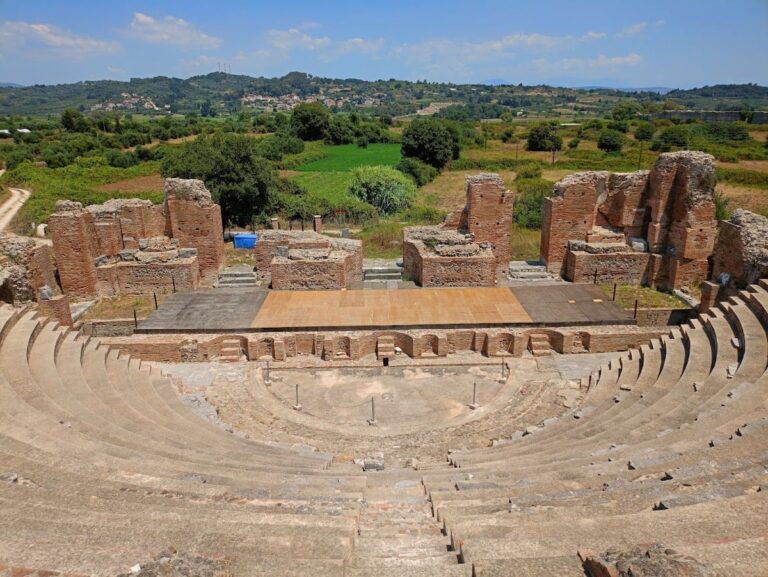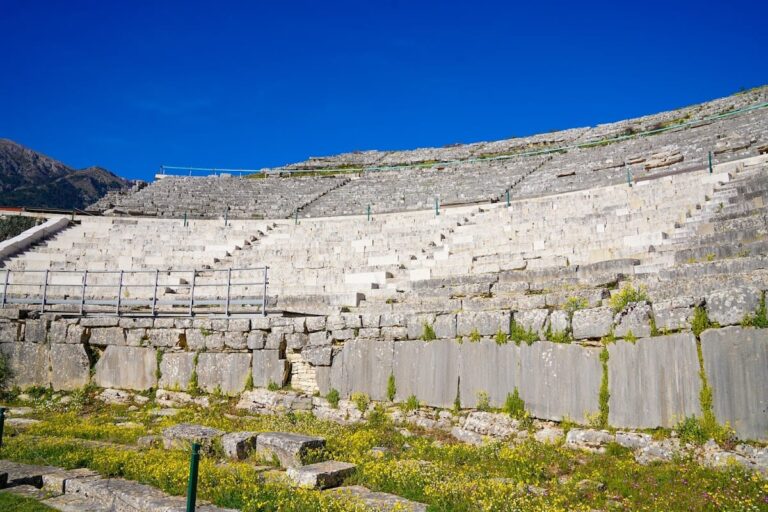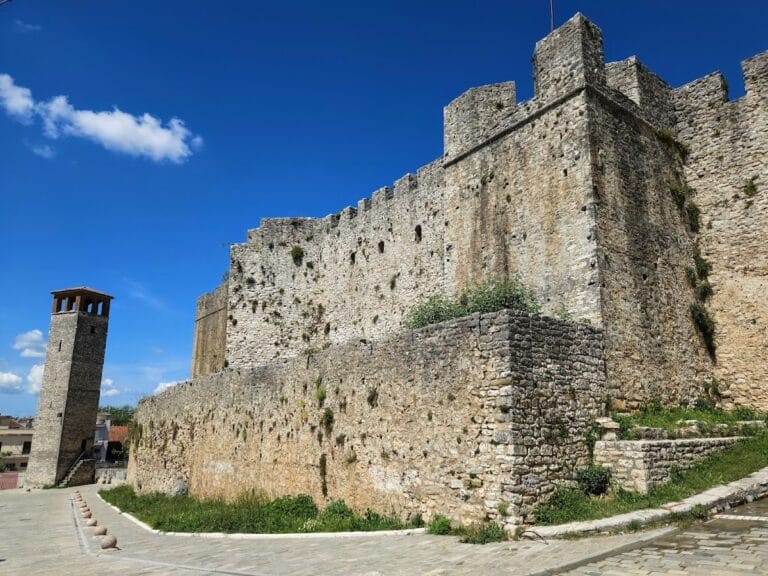Parga Castle: A Historic Fortress in Greece
Visitor Information
Google Rating: 4.6
Popularity: Medium
Google Maps: View on Google Maps
Country: Greece
Civilization: Unclassified
Remains: Military
History
Parga Castle is located in the town of Parga, within the municipality of Parga in Greece. The site occupies a strategic hilltop overlooking both the town and the sea, making it a natural defensive position shaped by various cultures over the centuries.
The origins of fortifications at Parga date back to the 11th century when the local population, assisted by Norman forces, first built defensive structures to protect against pirate attacks and later threats from the expanding Ottoman Empire. During the medieval period, the area was influenced by multiple powers. In the 14th century, the town maintained loyalty to the Byzantine Emperor Andronikos III Palaiologos, even amid regional rebellions. The fortress saw control under Gjin Bua Shpata, an Albanian ruler, during the 1390s. Throughout this era, there were proposals by Nicholas Orsini, the Despot of Epirus, to transfer authority over Parga to Venice in exchange for military support, but these were ultimately unsuccessful.
Venetian rule was formally established in 1401, as reaffirmed by the Ottoman-Venetian treaty of 1419. This control lasted until the fall of the Venetian Republic in 1797, interrupted only by brief spells of Ottoman occupation. In 1452, a commander named Hatzi Bey seized the castle for two years and partially demolished it. Later, in 1537, the famous Ottoman admiral Hayreddin Barbarossa led an assault that resulted in widespread destruction of the fortress and the surrounding houses. The castle experienced a cycle of siege, demolition, and reconstruction through this period, reflecting the contested nature of the region between the Venetians and Ottomans.
A notable phase of construction took place in 1707 under Count Marco Teotochi, who was governor and captain of Parga. His contribution is remembered through an inscription above the outer gate. The last major fortification effort by the Venetians began in 1792 and was completed in 1808 under French control, which followed the Venetian fall. During this time, the fortress withstood sieges by forces such as those under Ali Pasha of Ioannina until 1819.
In 1815, the local population revolted against French rule and sought protection from the British. The British, however, sold Parga to Ali Pasha in 1819. Ali Pasha then incorporated various additions to the castle, including strengthening the walls, establishing his private harem within the fortress, constructing a hammam (a Turkish bath), and extensively remodeling the interior. After Ali Pasha’s death in 1823, the castle came under direct Ottoman rule until 1913, when the area was integrated into modern Greece following the Balkan Wars. Restoration efforts have continued in the 21st century, with significant cleaning and repair work undertaken in 2020 by local authorities.
Remains
Parga Castle sits prominently upon a rocky peninsula, naturally surrounded by sea on three sides and abutting the town on the fourth. Its layout showcases a combination of natural features and purposeful Venetian military design, creating a formidable defensive presence. Within its narrow citadel complex, approximately 400 houses were constructed densely, maximizing limited space while offering protection from maritime threats.
The fortifications include eight towers positioned outside the main castle walls, each serving to strengthen the overall defense of the site. The entrance is marked by an arched gate displaying the winged lion of Saint Mark, which symbolizes Venetian authority. This gate also features the inscription “ANTONIO CERVASS 1764,” alongside emblems associated with Ali Pasha, such as two-headed eagles, further indicating the complex’s layered history. Nearby, an inscription near the powder magazine reads “Défense de la Patrie A.D. 1808,” commemorating the fortifications completed during the French occupation.
Water supply was a critical concern addressed through several features. The “Kremasma” fountain provided fresh water within the castle, supported by two cisterns that stored reserves for both residents and soldiers. Additionally, the proximity to two bays named Valtos and Pogonia facilitated resupply and communication by sea.
Architectural elements reveal a variety of defensive and functional spaces. Vaulted corridors and shooting rooms allowed defenders to protect the walls while remaining concealed. Supply arcades, barracks, prisons, and warehouses supported the fortress’s operational needs. Strong bastions were equipped to hold firearms and lighter weapons, bolstering defense against attacks. The castle also contains two forts, serving as the final line of defense if outer walls were breached.
During Ali Pasha’s rule, major internal refurbishments transformed the castle’s use and appearance. He added a hammam for bathing and established his harem within the fortress walls, signifying both residential and symbolic presence. These changes involved significant remodeling of interior spaces, blending practicality with personal luxury.
Access to the castle is arranged through narrow streets and stairways beginning at the port of Parga, with a paved route connecting to Valtos beach. Present-day maintenance includes illumination and adaptive reuse of two main restored buildings that serve as cultural venues, with one housing theatrical performances and the other exhibitions. The castle complex also contains a café and displays photographic exhibitions, making it a center for cultural engagement connected to its rich historical fabric.





